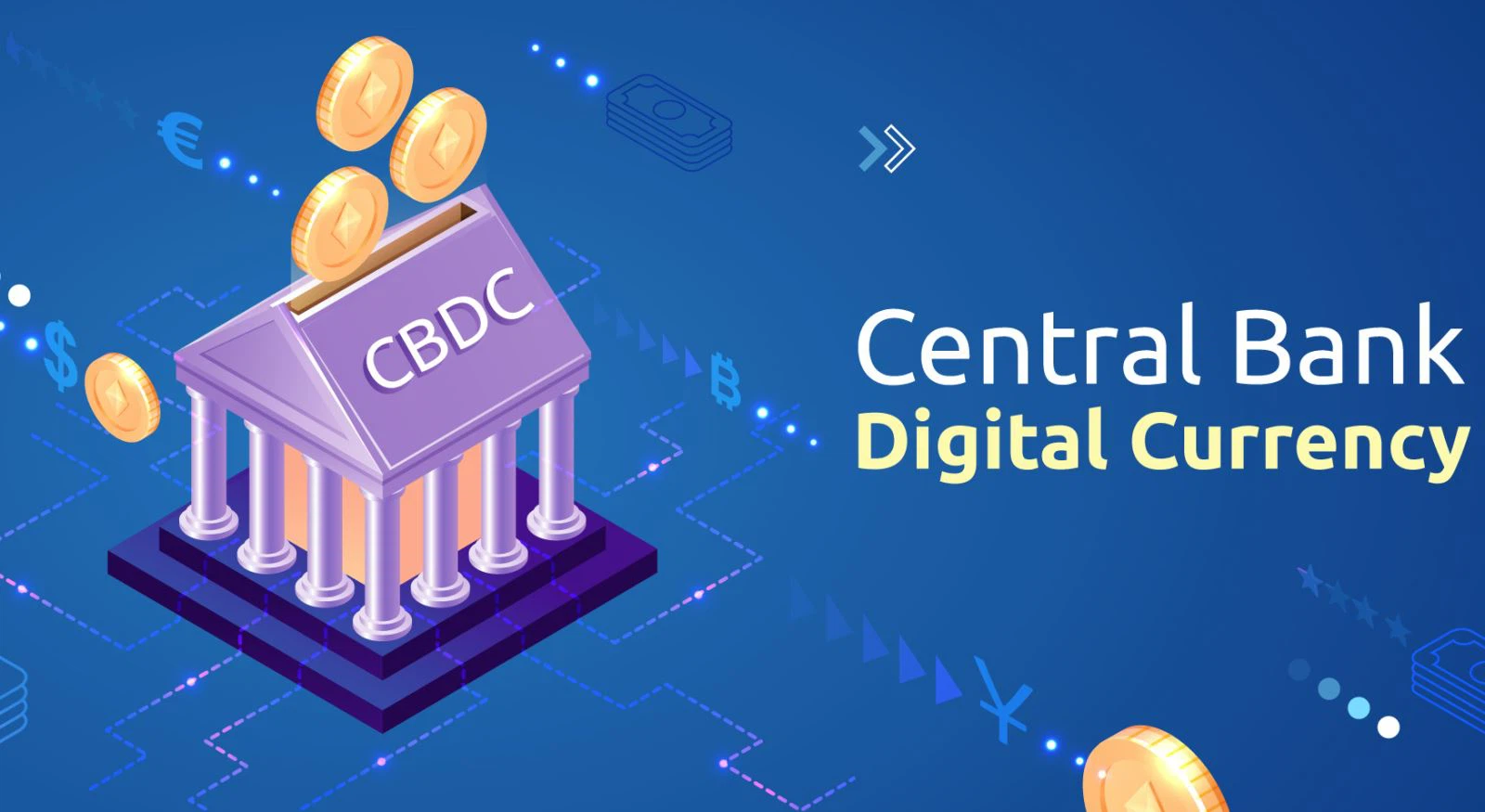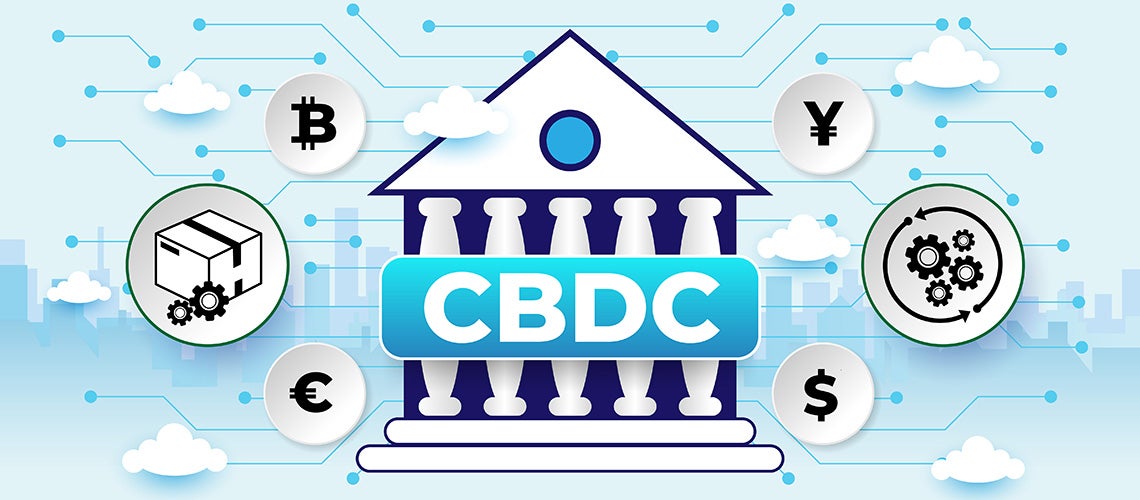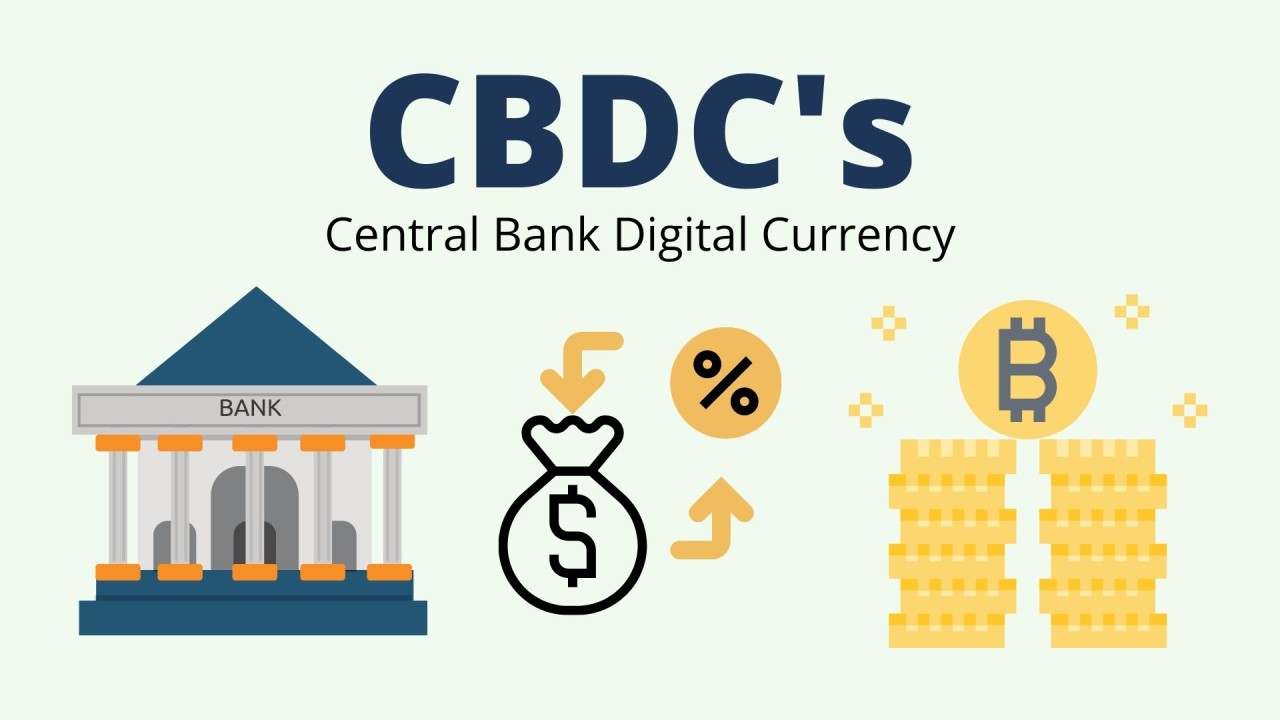Impact of CBDC: Will Bank Lending Face a Revolution?
Have you heard the buzz about CBDCs shaking up banking as we know it? Central Bank Digital Currencies, or CBDCs, are firing up talks everywhere about the future of money. They could flip bank lending on its head. We’re diving into the deep end to see how the Impact of CBDC on bank lending might just start a lending revolution. What does this mean for your local bank’s ability to give out loans? Fasten your seatbelt; we’re about to find out.
Understanding CBDCs and Their Potential Influence on Bank Lending
The Fundamentals of CBDC Operations
What is a CBDC? A Central Bank Digital Currency, or CBDC, is money in a digital form. It’s like the cash we use but in an electronic wallet. Every time we buy something, it moves through a track kept by the central bank. This is key because it’s secure and efficient.
CBDCs make it easier for people to get and use money. They can change how we think about and use banking services. We won’t always need a bank account like we do now. With digital cash, we can transfer money quickly and safely, even without a bank.
CBDC as a Turning Point for Traditional Banking Models
Ever wonder how CBDCs will shake up old banking ways? They will force banks to get with the times. Banks will need to find new ways to make money and serve us better.
CBDCs could mean we don’t need to keep cash in banks as much. So, banks could see fewer deposits. Fewer deposits might lead to fewer loans. Banks often use your deposits to lend out as loans. They earn interest from these loans. If deposits drop, loans could too.
Another big thing CBDCs can change is how much it costs to borrow money. Interest rates might fall if a central bank passes CBDCs directly to people. Banks then could compete on who gives better interest rates on loans.
CBDCs could also lead to what we call the ‘decentralization of banking’. This means we have more ways to get and use money. We might go to non-bank businesses for loans instead.
Banks need to change how they work to stay in the game. They’ll adjust their loan ways for a world with digital cash. They will also need to keep enough real money on hand to make sure they can stay stable.
Think of it this way, CBDCs could change our whole money world. Like when games moved from arcades to our homes. We still play, but now it’s different, easier, and more in our control.
Banks are watching this digital shift closely. They don’t want to be left behind. They’re thinking hard about how to offer good services even with CBDCs in play.
In sum, CBDCs might be the push that banks need to upgrade. They could reshape how we borrow, save, and move our money. This is exciting but also a lot to handle. Banks have their work cut out for them to keep up and stay useful.
Analyzing the Competitive Effects of CBDC on Traditional Banks
Disruption of Bank Deposit Models
Picture your bank account full of digital dollars. These aren’t like the ones we use now. I’m talking about money straight from our central bank—safe, simple, and maybe a bit scary for our usual banks. Central bank digital currencies, or CBDCs, are a fresh take on money. And they might turn the banking world upside down.
You may wonder, “How could CBDCs mess with bank deposits?” It’s like a game of musical chairs. But instead of kids and music, it’s our cash and where we stash it—banks or a digital wallet from the central bank? If more people pick the wallet, banks have less cash. Less cash means banks can do less lending. That’s a huge deal.
Here’s why: Banks rely on our deposits. They use them to give out loans. Think of deposits as the bank’s power-up. Without them, the bank can’t level up by lending. With CBDCs around, if people choose safety over interest, banks might lose their power-up. That means fewer loans for folks who want to buy a house or start a business. Tough times for everyone, right?
Let’s not forget how loans work now. It’s like baking. Banks have the recipe—interest rates—that decides who gets a slice of the money pie. But with CBDCs, this recipe could change. Banks might need to make new plans to keep lending without losing the race to CBDCs. That’s a tough job but not impossible.
Challenges to Retail Banks in the Face of CBDCs
Retail banks are like our money’s home. We trust them to keep it safe and give us a bit extra—interest. But wait until CBDCs hit the scene. The game changes completely. Imagine money that doesn’t need a bank to be safe or earn a bit. That’s what CBDCs offer. They could make our old banks look not so shiny anymore.
You might ask, “Can CBDCs really shake up our trusty retail banks?” The short answer is yes. And here’s the longer one: Retail banks might need to find new tricks to keep us around. Maybe offer better services, cooler perks, or sky-high interest rates. It’s a challenge, like a game where the prize is our money and loyalty.
We must also talk about how we get loans today. CBDCs could make things fairer. No more special treatment based on who you know at the bank. With CBDCs, if you’ve got the goods—a good plan and the means to pay back—getting a loan could be as easy as pie. That’s a win for anyone who’s ever felt left out of the money game.
So, friends, CBDCs might just give our regular banks a run for their money. They’ll shake up deposits, the way we get loans, and maybe make things better. It’s not all smooth sailing, but with some smart moves, banks and CBDCs could play nice together. And that’s a future worth watching.
The Structural Transformation of Credit Markets with CBDC Implementation
Rethinking Loan Structures Amidst Digital Currencies
Banks lend money. It’s what they do. But enter CBDC – a central bank digital currency. All of a sudden, lending money could change big time. Think of CBDC as money, but digital and smart. It’s made by central banks, not private ones. When banks lend, they usually look at what you own, your job, and your money habits. It all helps them know if lending to you is risky or not.
Now, with a CBDC, things get interesting. Banks might start to rethink how they lend. They may make loans fit the digital age better. This can be good for you and me. It makes getting a loan simpler and faster. Plus, loan rates could become more fair. No more “one-size-fits-all.” Rates could depend on real-time data; how you spend and save.
But there’s more. Banks may lend CBDC directly. They could use blockchain tech. It’s like a super-safe way to keep track of money online.
Digital Currency Adoption by Banks and Its Impact on Lending
What happens when banks start using CBDC big time? First, they could make money moving simpler. It means you get your loan faster. No need to wait days for it to clear. They also might offer new kinds of services. Things we haven’t even thought of yet. And it’s not just for big spenders or businesses. Everyone could get a piece of the action.
But let’s not forget, when a big change like CBDC comes along, it’s not all smooth sailing. Banks have to adjust. They have to learn this new CBDC world. And it’s not just about the tech behind it. They need rules and systems in place. This makes sure everything’s on the up and up.
Interest rates in a CBDC system could shake things up too. Central banks may set rates in new ways. This affects how banks make money from loans. Less profit from loans? It could happen. And banks love their profits.
Then there’s the competition. CBDC could mean everyday people don’t need bank accounts as much. They might just use their CBDC wallet. Goodbye bank fees! Hello, keeping more of our money.
All this is a big deal. Banks will need to think on their feet. They have to keep up or get left behind. Like in a game, where the rules change midway. They’ll need to plan their moves carefully. That’s not always easy to do. But hey, it’s the price of staying in the game.
Remember, banks are big on safety. They like things nice and steady. CBDCs could mean they’ll have to dance to a different tune. One that’s fast-paced and always changing. It’s like having a new dance partner that leads in ways you’re not used to. You could trip up if you don’t keep in step.
So, will bank lending face a revolution with CBDC? It sure looks that way. Get ready for some new moves on the bank lending dance floor.
The Interplay Between CBDC Development and Bank Stability
Managing Bank Liquidity and Profitability with CBDCs
CBDCs will shake things up in the banking world. They will change how banks keep and use their cash. Banks need this cash to make loans and handle daily withdrawals. With CBDCs, people might hold more money in digital form instead of in bank accounts. This shift could make banks hold more cash on hand. That can lower the cash they have to make loans.
So, will CBDCs make banks less stable? No, not really. Banks will adjust. They could change the way they get their money. They could also tweak how they give out loans. These changes will help them stay strong and profitable.
But it’s not all smooth sailing. Banks will face challenges managing this change. They’ll need to think fast and stay on their toes. They’ll face new rules too. Banks will need to follow these rules to keep using CBDCs right.
CBDC Operational Challenges and Strategic Adjustments for Banks
Banks will need to change how they work inside. Think of it like a car switching from gas to electric. Banks will need new tech and ways to track money. This change means training people and upgrading systems.
Then there’s competition. If we can all use CBDCs, why go to a bank? Banks will have to work hard to show they’re worth it. They’ll have to offer better services or deals to us.
And what about loans? With CBDCs, banks might have to rethink them. They’ll face fresh competition from other places like online loan services. These folks might do things faster or cheaper. Banks will have to keep up.
But let’s not forget about us, the customers. Banks will need to make sure we’re on board. They’ll have to teach us about CBDCs and why they’re safe and useful.
So, what’s the big picture? Yes, CBDCs mean banks will have to switch things up. But the smart ones will see this as a chance to grow. They’ll use the new digital money idea to give us better banking than before. That means rethinking how they make money and help us save or borrow. The journey won’t be easy, but it could lead to better banks for all of us.
To wrap things up, we’ve dived deep into CBDCs today. Starting with how they work, we saw they could shake up the way banks have always done things. CBDCs might just turn banking on its head, changing how we save our money and get loans.
Then, we looked at how these digital bucks might push banks into a tight spot. It’s not just about where you keep your cash; it’s about how banks will fight to stay on top.
Next, we thought about loans – if money goes digital, will borrowing change too? Well, banks might need new tricks to lend money when we’re all using CBDCs.
Finally, we questioned if banks could keep steady when CBDCs hit the scene. They’ll need to be smart and fast to adapt and keep their cash flowing right.
In a nutshell, CBDCs aren’t just another tech fad – they’re a game-changer. And as banks lace up for this race, we all need to stay alert. It’s not just banks’ play – it affects us all. So, stay tuned and watch this space. CBDCs are coming, and they’re bringing a storm of change.
Q&A :
How will Central Bank Digital Currencies (CBDCs) affect commercial bank lending?
Central Bank Digital Currencies (CBDCs) could potentially alter the landscape of commercial bank lending by providing a direct-to-consumer option for digital currency, which may reduce the reliance on traditional bank deposits. This could lead to a decrease in the amount of funds available for banks to lend out. Additionally, CBDCs may offer lower transaction costs and faster settlement times, making them an attractive alternative to bank-managed loans. Regulatory frameworks and the specifics of how CBDCs are implemented will play a crucial role in determining their impact on bank lending practices.
Can CBDCs lead to disintermediation in the banking sector?
CBDCs have the potential to cause disintermediation in the banking sector by allowing consumers to hold digital currency accounts directly with the central bank. This could sidestep the need for commercial banks as intermediaries for certain services, such as payments and savings accounts. If a significant portion of consumer and business deposits were to shift from commercial banks to a CBDC, banks might experience reduced funding sources for lending activities. The extent of disintermediation will depend on the design of the CBDC system and the roles that commercial banks will play within it.
What are the potential risks of CBDC for bank stability?
The introduction of CBDCs poses potential risks for bank stability, primarily through the possibility of rapid, large-scale shifts of funds from commercial bank accounts to CBDCs, especially during financial crises or periods of uncertainty. This could exacerbate bank runs, reduce liquidity, and impact the banks’ ability to provide loans. Additionally, if banks lose a significant portion of their deposit base to CBDCs, they might have to resort to more expensive and volatile funding sources to maintain lending capacities, which could impact their profitability and stability.
How might CBDCs change the competition in the banking sector?
The advent of CBDCs is likely to increase the competition in the banking sector by introducing a state-backed digital currency alternative to traditional bank deposits. This could spur commercial banks to innovate and improve their services, particularly in the areas of digital payment solutions and customer experience. Banks might also be compelled to offer higher interest rates on deposits to retain customers, leading to a potentially more competitive interest rate environment. The competitive landscape will be shaped by how central banks design their CBDCs and the regulatory measures ensuring a level playing field.
In what ways could CBDCs potentially enhance bank lending?
CBDCs could potentially enhance bank lending by improving the efficiency of the payment system and reducing transaction costs. If designed to complement existing banking operations, CBDCs can facilitate seamless and real-time settlement of transactions, which could help banks manage their liquidity more effectively. Moreover, CBDCs might lead to the creation of new financial products and services that leverage the technology behind digital currencies, thereby providing banks with new avenues for lending. However, this enhancement is contingent on careful regulation and collaborative approaches between central banks and the commercial banking sector.




